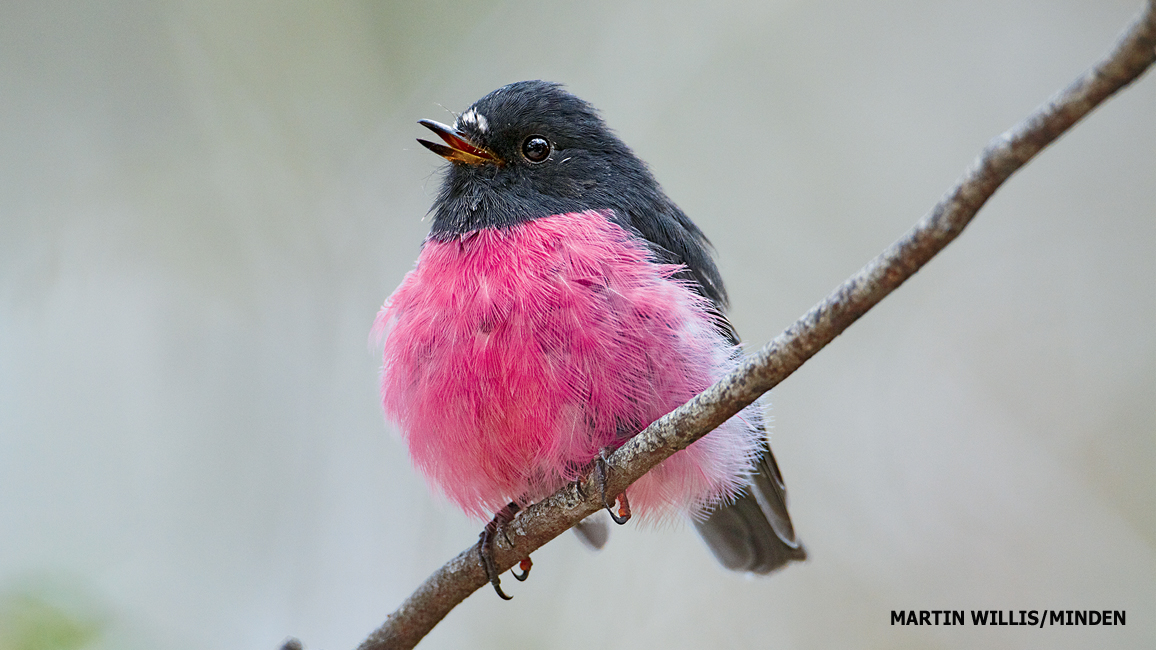
Pink in the Wild
By Anne CisselIn the animal kingdom, pink pops out all year long—not just on Valentine’s Day!

Flamingos have pink feathers because of a certain chemical in the food they eat. Are the two bright birds in this photo smooching? Actually, they’re fighting!
Nobody had better mess with this spiny stone crab. Those spikes on its body and legs protect it from animals that might want to eat it.
This pink beauty is an elephant hawk moth. Why the funny name? The “hawk” part is because the insect is an amazing flyer. And it looks like a tiny elephant’s trunk when it’s a caterpillar.
Rosy inside and out! This lizard, the pink land iguana, lives only on one of the Galápagos Islands, on the slopes of a volcano.

This odd-looking fellow is a paddle-flap scorpionfish. It isn’t a very good swimmer, but it gets around just fine by hopping along the sea floor.
VIDEO: Watch a paddle-flap scorpionfish in action!
No mammal has pink fur. But many mammals have pink skin that shows when they’re born with little or no fur. This is a newborn brown rat, so young that its eyes aren’t open yet. Baby rats and mice are often called “pinkies.”
You probably have seen the American robin, with its red-feathered breast. But this bird is a pink robin, which lives in Australia. Only the males have the bright pink feathers—the better to attract females!
Most katydids are green or brown. But some are yellow, orange—or pink!
This Amazon river dolphin looks as if it wants a hug. The pink freshwater dolphin might weigh more than 400 pounds. Maybe a hug isn’t such a good idea!
















